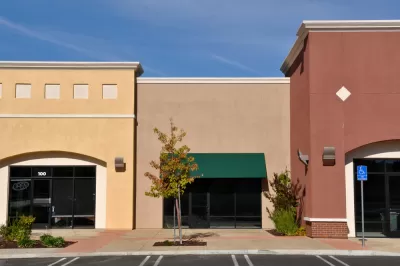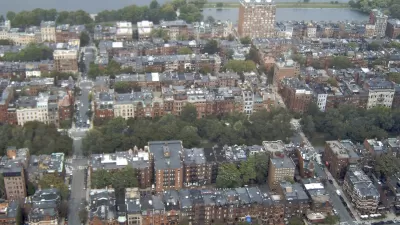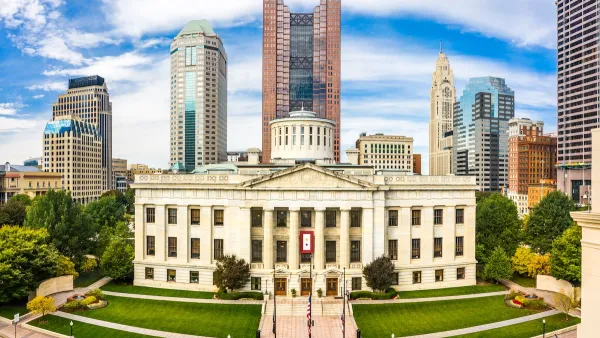Urbanist Jane Jacobs' support for mixed use development has long been seen as the best urban design strategy, but this vision assumed that the retail space under housing could be rented. What if that is no longer the case?

Should ground-floor use go from retail to housing?
In San Francisco, the closing of once-popular San Francisco restaurants and the decline of longtime Union Square pillar Macy’s raise a question: Have the fundamentals of urban retail changed?
If the answer is yes, San Francisco could move to reduce retail requirements in new housing developments while adding badly needed housing, which would represent a dramatic change in “best practices” for urban neighborhoods.
Jane Jacobs’s support for mixed-use development with “eyes on the street” has long been seen as the best urban design strategy, but this vision assumed that the retail under housing could be rented. What if it cannot? Or, what if the only market for these retail spaces are for offices closed on evenings and weekends? Such uses do not offer the ongoing street activity that created Jacobs’s famed street “ballet.”
As San Francisco and other large cities combat their housing shortages, the requirement that ground-floor space under housing be for retail should to be open to debate. We may conclude that the city should not be giving up housing units for retail spaces that are not wanted or needed.
National Trend
An intriguing article out of New York City found that despite the economic upturn, vacancy rates are up in every Manhattan retail corridor. Some argue that unlike past downturns, this one is not cyclical. Brokers believe that “brick-and-mortar retailers will shrink dramatically during the next few years, so supply of retail space will outweigh demand for it.”
I recall that over a decade ago, Berkeley Daily Planet Editor Becky O’Malley questioned whether Berkeley had too much retail in light of people’s shifting purchasing activity to the internet. Urban America’s buying habits have shifted even more dramatically since that time, raising questions as to whether it’s time to rethink the popular model of mixed-use development.
Like nearly everyone else, I prefer the look of mixed-use streets. I bemoan the Tenderloin’s unusual lack of mixed-use housing, despite challenges finding quality tenants for existing spaces. Jacobs was correct: mixed-use streets are more interesting, and have more energy and foot traffic.
So before we give up on mixed use, let’s consider how San Francisco and other cities can maintain successful retail in an online world...
FULL STORY: Should Online Shopping Change How We Use Ground-Level Space?

Planetizen Federal Action Tracker
A weekly monitor of how Trump’s orders and actions are impacting planners and planning in America.

Congressman Proposes Bill to Rename DC Metro “Trump Train”
The Make Autorail Great Again Act would withhold federal funding to the system until the Washington Metropolitan Area Transit Authority (WMATA), rebrands as the Washington Metropolitan Authority for Greater Access (WMAGA).

The Simple Legislative Tool Transforming Vacant Downtowns
In California, Michigan and Georgia, an easy win is bringing dollars — and delight — back to city centers.

The States Losing Rural Delivery Rooms at an Alarming Pace
In some states, as few as 9% of rural hospitals still deliver babies. As a result, rising pre-term births, no adequate pre-term care and harrowing close calls are a growing reality.

The Small South Asian Republic Going all in on EVs
Thanks to one simple policy change less than five years ago, 65% of new cars in this Himalayan country are now electric.

DC Backpedals on Bike Lane Protection, Swaps Barriers for Paint
Citing aesthetic concerns, the city is removing the concrete barriers and flexposts that once separated Arizona Avenue cyclists from motor vehicles.
Urban Design for Planners 1: Software Tools
This six-course series explores essential urban design concepts using open source software and equips planners with the tools they need to participate fully in the urban design process.
Planning for Universal Design
Learn the tools for implementing Universal Design in planning regulations.
Smith Gee Studio
City of Charlotte
City of Camden Redevelopment Agency
City of Astoria
Transportation Research & Education Center (TREC) at Portland State University
US High Speed Rail Association
City of Camden Redevelopment Agency
Municipality of Princeton (NJ)





























